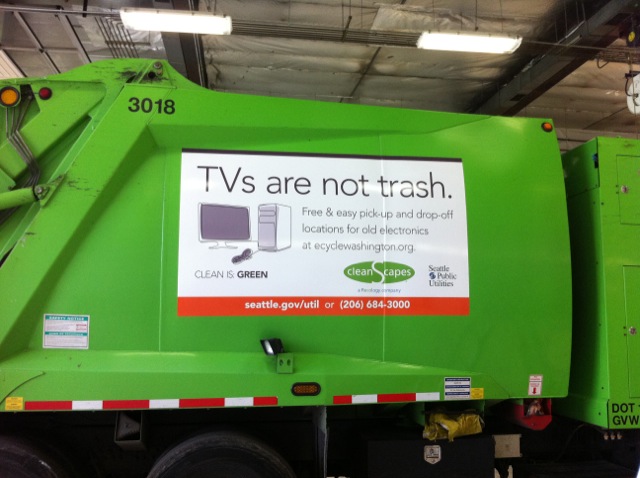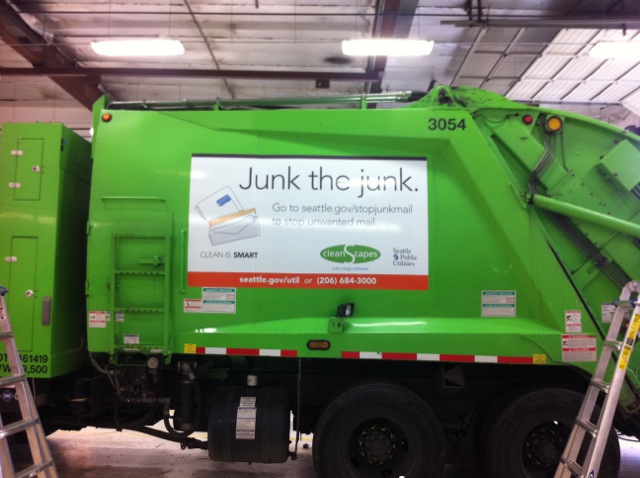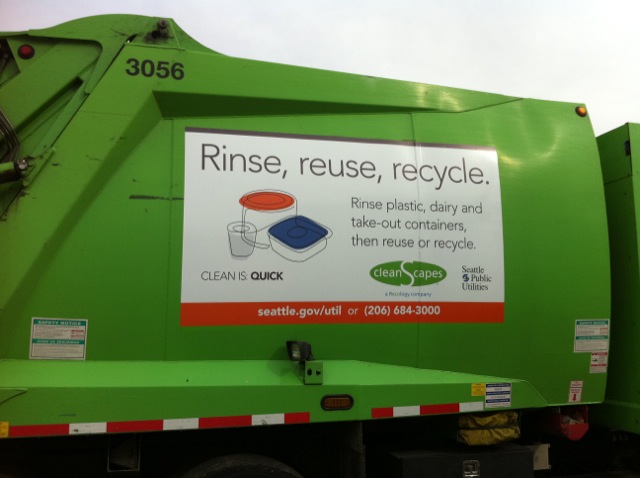Zero Waste.
Can a city eliminate garbage?
Waste disposal is an issue for cities of all sizes. Today, with global population at 7 billion, there are more than 20 megacities with populations greater than 10 million.
The old model of simply dumping waste
away from population centers carries burdensome costs and constraints, as well
as obvious environmental impacts.
In reality, there is no “away”.
Waste stream management starts
with waste reduction and diversion
strategies. Let’s investigate what
this looks like for one city,
San Francisco.
total area of San Francisco
population, 2011
=17,179
people per square mile
tons of waste
to landfill in 2011

Residential
single- and multi-family
Commercial
office, restaurant, retail, industrial
Construction
construction and demolition
Public
litter cans, parks, streetsweeping
Where does it
come from?


Where does it go?
introducing the three bin system:
Not all waste ends up in landfill. In 2000, San Francisco began
providing three separate bins for garbage, recyclables, and compost.
Where
do they
end up?
What’s in
our garbage?
zero
waste
by
San Francisco
How do we get there?
compost.
What happens to it?

5 focus areas
for creative
waste solutions
(with examples)

the change: ultimately, the problem of waste disposal will be solved only by
designing viable alternatives to consumption lifestyles and throughput economies.
let’s talk. share your thoughts
What can we do as consumers to
stop waste before we buy it?
What is the low hanging fruit?
Where can we focus our efforts to
get the biggest bang for the buck?
What makes it easier for recycling
plant processors to do their jobs?
How can we better ensure that
recyclables actually get recycled?


Over the past ten years, total annual waste sent to landfills in San Francisco has decreased 50%, from 872,700 tons in 2000 to 446,635 tons in 2011.
The amount of waste disposal per capita in San Francisco, about one half ton per year, represents the smallest per capita waste disposal among the Bay Area counties.
Source: sustainablesf.org
SF garbage to landfill
84%
Altamont Landfill & Resource Recv`ry
53 miles east of San Francisco
374,202 tons
9%
Corinda Los Trancos Landfill (Ox Mtn)
28 miles south of San Francisco
40,739 tons
3%
Keller Canyon Landfill
38 miles northeast of San Francisco
13,110 tons
<2%
Potrero Hills Landfill
52 miles northeast San Francisco
6,943 tons
+ 17 more destinations less than 1%
Source: calrecycle.ca.gov
In 2011, California ports exported more than $9.5 billion dollars in waste and scrap.
China receives most of this tonnage.
Mixed Paper: 11M tons, $1.7B
Ferrous Metal: 8.1M tons, $3.7B
Non-Ferrous Metal: 1.7M tons, $3.8B
Plastic (#1#2#4,): 0.5M tons, $185M
waste = food
From San Francisco, compost gets trucked 65 miles to Jepson Prairie Organics near Vacaville. This facility is owned by Recology. (In the future, compostables will be transported by frieght, which is much more energy-efficient.) Many believe that composting is the biggest bang for our buck in terms of waste reduction. Composting represents a way to close the carbon loop. Food scraps and other organic materials are the emitters of methane gas when trapped in the landfill. However, when they are composted, the carbon stays in the growing cycle and feeds new plants.
Source: sfenvironment.org
toward zero waste
SF Environment, the Commission on the Environment, the Board of Supervisors, and the Mayor have all helped create ordinances and resolutions to address the problem of solid waste, including setting the goals of 75 percent landfill diversion by 2010 and zero waste by 2020, creating various policy initiatives to ensure that government leads by example, and making efforts to encourage the private sector to move toward zero waste.

Source: sfenvironment.org
what a difference 10¢ makes
On October 1, 2012, San Francisco’s plastic bag ban and 10 cent charge for paper or compostable bags at all retailers went into effect. Checkout bag charges have been shown to reduce the number of disposable bags used by 70–90%.
Source: sfenvironment.org
full life cycle assessment
Method, an innovator in home care products, has partnered with TerraCycle to take back packaging from all cleaning product companies. “We want every part of a cleaning bottle to be used again, including parts that aren’t accepted by most recycling systems, like triggers and pumps” said Adam Lowry, co-founder.
built-in systems
San Francisco’s new METREON Eco Dining Terrace reinvents the mall food court. Tenants use 100% compostable / recyclable food containers; recyclables are sorted from waste; food waste and compostables are sorted at a new on-site pulper. Compost is eventually used at Napa farms and vineyards.
Source: westfield.com/metreon/terrace/
commingle mingle
By accepting commingled recyclables, waste service providers can decrease waste to landfill. A study titled “Commingled Versus Separated Curbside Recycling” discovered commingled recycling programs achieved a higher average weekly participation rate (58% vs. 42%) and generated 6 times more recyclables.
know before you throw
CleanScapes, a Seattle-based waste service provider displays easy to remember tips on their high-profile trucks, seen daily by tens of thousands of people.



Source: CleanScapes.com











